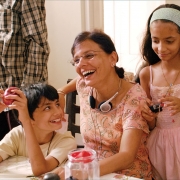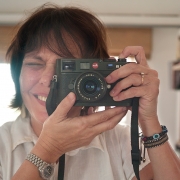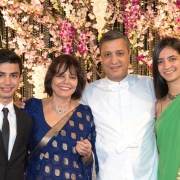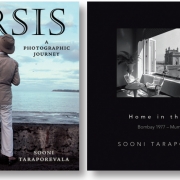
People
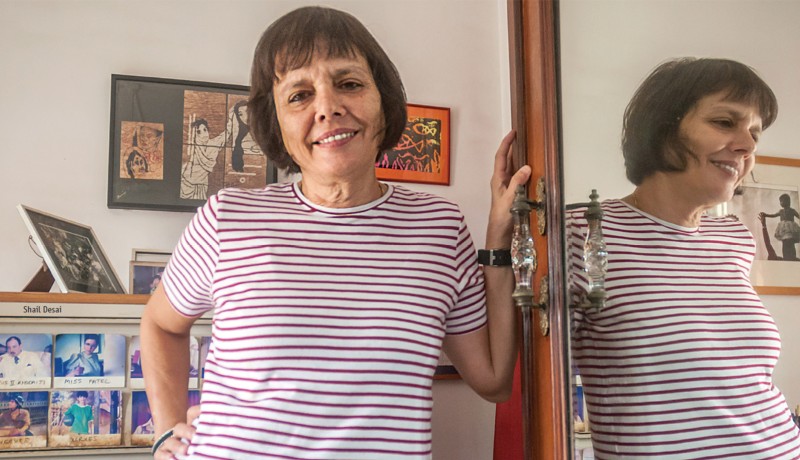
Sooni Taraporevala has themed most of her work on her beloved Bombay and then Mumbai. What does the veteran filmmaker and photographer have in store? Shail Desai finds out
Beyond the clichés that describe the creative brilliance of an internationally acclaimed filmmaker and photographer, Sooni Taraporevala is a bit of a Jekyll and Hyde. But alternating between periods of solitude and diving for inspiration into the world at large is absolutely essential to her process.
“Scriptwriting is very solitary because it’s just me, holed up in what I call my ‘writing cave’ while staring at a blank wall and a blank screen. When it comes to photography, I have to go out into the world and interact with people,” she says. “They are two very different activities but I like not being stuck to just one thing.”
Taraporevala is still basking in the afterglow of her second book, which released in December last year. Titled Home In The City: Bombay 1977-Mumbai 2017, this collection of photographs is the culmination of a four-decade-long journey.
As her lens panned from Bombay, as it was then called, to Mumbai, the city we know today, Taraporevala did much more than just document myriad facets of this metropolis with her camera. It was a much more personal journey, for it is during this time she evolved as an artist—from a photographer to scriptwriter and then film director.
Over the years, she also went on to write the screenplays of movies like the Oscar-nominated Salaam Bombay! (1988), Mississippi Masala (1991) and The Namesake (2006) in collaboration with celebrated film director Mira Nair as well as other directors and producers.
On a balmy morning in Mumbai—Bombay, for old-school faithfuls—Taraporevala takes time out from her busy schedule to look at the big picture. As a young girl, she schooled in Mumbai before she went to Harvard University in the US as she found the college environment here “not intellectually stimulating enough”.
Until then, she had left the country only once, to visit her aunt and uncle in Hong Kong. To her surprise, her grades and other pursuits at school earned her admission—and a scholarship—to Harvard and she soon found herself on her second international flight out of Mumbai.
“I was very fortunate as it was the only place that offered a scholarship,” she says with a smile. “My parents were very brave about letting me go; I was an only child. But who could refuse the best college in America? It was a no-brainer and I was off in 1975.”
At Harvard, Taraporevala majored in English literature but took film and photography courses as well. “I was fascinated that you could actually study film, so I did a lot of film courses and picked up photography during this time. Though I had been gifted an Instamatic [camera], I bought my first real camera with money borrowed from a roommate,” recalls the intrepid explorer, whose photographs have since found a place in the permanent collections of the National Gallery of Modern Art, Delhi, and the Metropolitan Museum of Art, New York. “I also did a lot of theory and criticism classes, in addition to the filmmaking course. This was a time when there were no videos, so the only way you could watch a film was if it was screened or projected, or if you saw it on a Steenbeck machine, which was used to edit films. That’s how we watched films. For instance, one entire semester, I studied Alain Resnais’ Hiroshima Mon Amour, shot by shot, on a Steenbeck.”
A year later, at Harvard, Taraporevala found a buddy in filmmaker Mira Nair, with whom she went on to collaborate. “We were both a part of the Class of 1979, but were never in the same classroom as we pursued different majors. I don’t think we ever took a course together. Our collaboration started with friendship,” says Taraporevala, who went on to become a member of the Academy of Motion Picture Arts and Sciences, which hosts the Oscars, and a Member of the Writers Guild of America.
On a semester off from college in 1977, Taraporevala returned to Bombay and began photographing the city, though she had no clue where it would lead. While taking time off, she ventured out to take photographs of her neighbourhood around Gowalia Tank. It was a photographic and personal journey that culminated last year, when she released Home In The City: Bombay 1977-Mumbai 2017, which includes essays by Pico Iyer and Salman Rushdie.
Over the next few years, Taraporevala found her gurus in various fields. When it came to photography, she was fascinated with the works of Henri Cartier-Bresson and Helen Levitt, among others, while she loved the films of Francois Truffaut, Federico Fellini and Satyajit Ray. Following a master’s degree in cinema studies at New York University, she returned to India to find her calling.
Taraporevala’s first job was as a freelancer with publications such as Diner’s Club and Namaskar magazine, in addition to Indian Express, where she worked on travel stories, both as a writer and a photographer. In 1986, she wrote her first screenplay, Salaam Bombay!, which was so successful that she found another career as a screenwriter.
After two decades of screenplay writing, Taraporevala made her directorial debut with Little Zizou (2009), of which she also wrote the screenplay. A family drama-cum- comedy set in Mumbai, the National Award-winning film screened at 17 national and international festivals was in theatres in Mumbai for 12 weeks and is in the archives at Harvard University and in Fukuoka, Japan. The film is special to her as the cast and crew comprised family and friends, including her two children, Iyanah and Jahan Bativala.
“I wrote the roles to suit them,” she reveals. “I incorporated into the script what I had heard them say on a daily basis and used their sibling rivalry to good effect. They were marvellous, they did a great job. I was, and still am, very proud of the work they did on that film.”
Another passion project was her book of photographs, Parsis: The Zoroastrians of India—a photographic journey of the Parsis, a community she belongs to and knows all too well. The photos range from 1980 to 2004. She published the first edition in 2000 herself, through a company she set up called Good Books. She went on to co-publish the second edition with Overlook Press in New York in 2004. The book is now a staple of most Parsi households in India and abroad.
Though Taraporevala was familiar with the subject, the project came with its share of challenges. “I found it hard to make interesting pictures of the younger generation of Parsis in the 1980s,” she confesses. “I was one myself and we were just sort of miniature versions of the adults, whereas kids today are of a different mindset. The world has opened up a great deal now. We had just two programmes on television back then, so it was a lot different. The Internet has changed things today.”
With time, Taraporevala had to embrace change, both with her photography and scriptwriting. Her early college applications were drafted on a manual, portable typewriter, before she moved on to an electric typewriter at college. Salaam Bombay! was plotted on an electronic typewriter, after which she got her first computer, a Toshiba, with the archaic DOS system. A disaster later, she discovered Apple and has never looked back. On the photography front, she was most comfortable shooting in black and white before Raghubir Singh encouraged her to explore colour. She made the transition to digital in 2004.
In 2016, Taraporevala forayed into a new medium and made a virtual reality documentary titled Yeh Ballet. The 14-minute documentary features two young boys from the chawls of Mumbai who won scholarships to study ballet in the US. Produced by Memesys Culture Lab, it premiered last year.
These days, Taraporevala is working on another film that she hopes to direct soon. Asked if she has any desire to make a commercial blockbuster, she laughs. “I’m not sure I have a commercial bone in my body. I would love to do a commercial film but I’m not sure I know how to because my training and studying was all to do with non-mainstream. So that’s my history, that’s what I have done and I don’t know if I can switch streams midway. But, hey, Salaam Bombay! was commercial! It did really well. It was popular. It still is. It just wasn’t mainstream, if you know what I mean. By ‘mainstream’, I mean Housefull 2 and other films like it.”
Taraporevala’s children have followed in her footsteps. While Jahan is studying film, Iyanah is still finding her drive as a sophomore in the US. But photography is what the mother and daughter bond over, as Taraporevala wakes up to pictures Iyanah has developed in the dark room and sent her via WhatsApp. “It gives me a real thrill. My father was an amateur photographer and I remember how I used to ‘air mail’ photos to him every once in a while alongside the weekly letters. It takes me back to those days.”
The balancing factor at home is her husband, Dr Firdaus Bativala, a dentist by profession, who, Taraporevala says, is more passionate about films than she is. “We are from different fields, so he balances my life fantastically,” she shares. “We have a lot of things in common like the love for books and reading, the same sense of humour, and the same absentmindedness! If I’m in the middle of a story, I can be walking on the road and thinking about it. I’ve walked into lamp posts and I’ve taken Firdaus to Navjots and weddings on the wrong dates. Then again, as we are both a little absentminded, it equalises.”
MOVIES
1988: Salaam Bombay! (screenplay)
1991: Mississippi Masala (screenplay)
1998: Such a Long Journey (screenplay)
2000: Dr Babasaheb Ambedkar (co-writer, screenplay)
2006: The Namesake (screenplay)
2008: Little Zizou (writer, director)
DOCUMENTARY
2013: Girl Rising (co-writer)
2017: Yeh Ballet (director)
PHOTO BOOKS
2000: Parsis: The Zoroastrians of India
2017: Home In The City
Photo: Shail Desai Featured in Harmony — Celebrate Age Magazine May 2018
you may also like to read
-
For the love of Sanskrit
During her 60s, if you had told Sushila A that she would be securing a doctorate in Sanskrit in the….
-
Style sensation
Meet Instagram star Moon Lin Cocking a snook at ageism, this nonagenarian Taiwanese woman is slaying street fashion like….
-
Beauty and her beast
Meet Instagram star Linda Rodin Most beauty and style influencers on Instagram hope to launch their beauty line someday…..
-
Cooking up a storm!
Meet Instagram star Shanthi Ramachandran In today’s web-fuelled world, you can now get recipes for your favourite dishes at….



